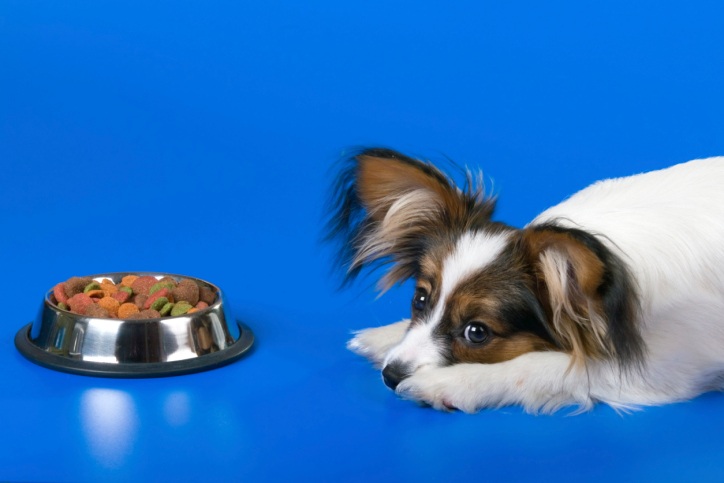“This post contains affiliate links, and I will be compensated if you make a purchase after clicking on my links.”

Diet rotation is mostly frowned upon by most veterinarians. And for good reason, because making drastic changes to your furry pal’s diet can often lead to several problems.
However, several people are in favor of diet rotation and this practice is becoming increasingly popular among dog owners. The key is to doing it the right way so that your pooch isn’t stressed by the changes. Some dogs may also need to have their diet changed for a number of reasons.
Whether your pooch needs a change of diet, or if you’re thinking of rotating his diet, there’s nothing to be worried about. When done the right way, it sure is going to benefit your dog.
Here are a few things you should know about diet rotation.
Why Change Food?
It has always been believed that a dog should be fed the same type of food. An increasing number of people consider diet rotation to be beneficial to the dog as the practice can expose their dog to varied nutrients for example, protein. The amino acids in all proteins are different depending on the food source. By alternating between meat mixes, you’ll be giving your pooch a variety of proteins that will help him stay healthier.
Moreover, switching between diets regularly minimizes the long-term effects of trace amounts of toxins present in different foods. And diet rotation also makes you feel good about yourself because you know you wouldn’t be able to live on the same type of food every day of your life. Why should your beloved pooch eat the same food day in and day out?
Speaking of nutritional needs, if your puppy has turned into an adolescent or if your adolescent is turning into an adult, you’ll need to change his food. Growing dogs require more nutrition, and the nutritional needs of senior dogs are different too.
Apart from these reasons, you may need to change your dog’s food because it just isn’t right for him. If your dog develops skin allergies, non-cutaneous allergies such as gastro-intestinal disorders, gastro-intestinal motility disorders, food intolerances, or chronic illnesses such as liver diseases, heart problems, urinary stones, or renal failure, it could be possible that the food you’re feeding him is the culprit.
How to Change Dog’s Food?
Whether you want to change your dog’s diet completely or consider diet rotation, always be sure to go about it gradually. If you feed your pooch a particular brand of food or a particular type of meal and switch to another brand or type all of a sudden, your pooch’s tummy is sure to get upset.
Your pet’s stomach has several bacteria that help in digestion. If you suddenly change your dog’s diet, it can impact the ability of the bacteria to digest food properly. This leads to common symptoms such as diarrhea and vomiting. That being said, some dogs can handle sudden diet changes. But to stay on the safer side, avoid taking that route.
You also can’t be sure whether your pooch will like the changes. Introducing new food suddenly may turn your pal into a picky eater. As such, it’s best to buy small-sized packages of dog food or try out dog food freebies to see what works best for your furry friend.
You can switch from one brand to another or between wet and dry food as per your liking. Start by feeding your dog a mixture of 25% new food and 75% old food. Continue this for three days and look for signs of GI disturbances. You may want to continue feeding your dog a mix of the old and new food in this ratio for a couple of days more.
If all seems well, feed your dog a mix of 50% new food and 50% old food. Again, continue for a couple of days and check for signs of illness. Increase the ration of new food to 75% and decrease that of old food to 25% for another couple of days. Your dog will now be ready to eat 100% new food.
If you intend to rotate your pooch’s diet frequently, follow this same method. Once you start feeding him 100% new food, continue for a few days, and then begin adding the other variant gradually in the same way.
Things to Keep in Mind
As you’ll be alternating between food types and/or brands, you’ll find that the dog food you purchase takes longer to finish. This can affect the freshness of the product and can also lead to loss of essential nutrients. Be sure to store the food in a clean and dry place that is away from direct sunlight.
Additionally, if you include too many variations in your dog’s diet, you could easily forget what you’re feeding your dog. In order to ensure you’re doing it all right, organize the food in some way so it’s easy for you to remember.
You can also make a food diary and note your dog’s diet changes in it. Maintaining a diary will also help you keep track of GI disturbances or other illnesses.
Conclusion
Now that you know so much about diet rotation, you can be confident going about it. Just be sure to follow the right method; you certainly don’t want your dear pooch to fall ill.
It is important to keep in mind that a veterinarian always knows best. They can tell you everything about your dog’s health and also know his daily nutritional needs. So before making any drastic changes to your pooch’s diet, always consult your dog’s vet.


















[…] The Benefits of the Rotational Diet […]